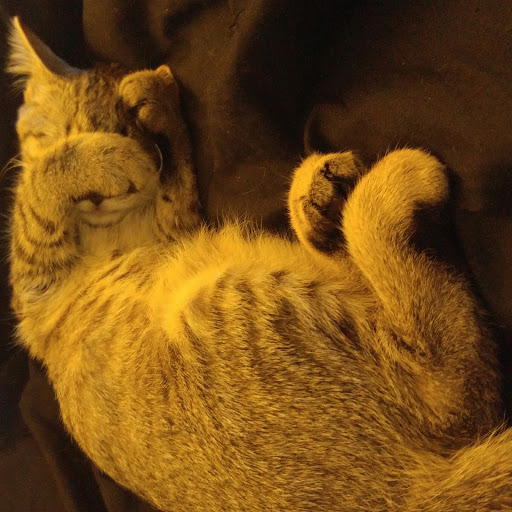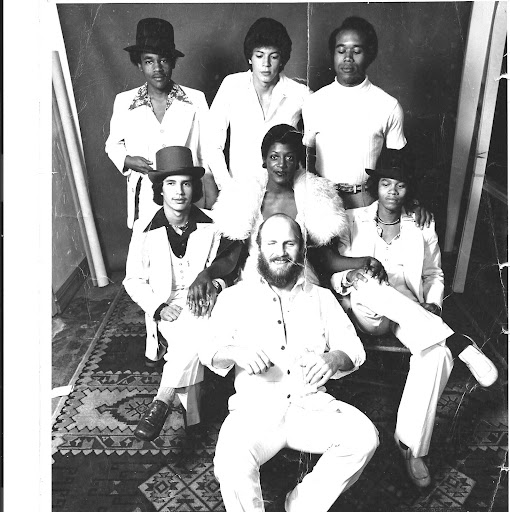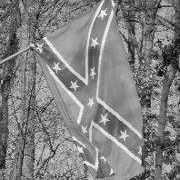Donald M Young
age ~81
from Seattle, WA
- Also known as:
-
- Michael D Young
- Mike M Young
- Mike D Young
- Mike B Young
- Mike J Young
- Don Michael Young
- Don M Young
- Don Iida
- Dmichael Young
- Michael Casteel
- Phone and address:
-
1201 3Rd Ave, Seattle, WA 98101
2062646359
Donald Young Phones & Addresses
- 1201 3Rd Ave, Seattle, WA 98101 • 2062646359
- 5031 Lakehurst Ln SE, Bellevue, WA 98006 • 4254518205
- 3241 Hunts Point Rd, Bellevue, WA 98004 • 4254518205
- 5837 Pleasure Point Ln SE, Bellevue, WA 98006 • 4254518205
- Hunts Point, WA
- Sammamish, WA
- Maricopa, AZ
- Kiona, WA
Resumes

Donald Young Tempe, AZ
view sourceWork:
Ducommun Technologies Inc
Jan 2003 to Dec 2014
Manufacturing Engineer / Tech Support E & K Construction
Phoenix, AZ
Jun 2001 to Sep 2002
Laborer, Sheet Rock Packard Hughes Interconnect-Wiring Systems
Jan 1997 to Jun 2001
Production Engineer/ Support Packard Hughes Interconnect-Wiring Systems
Jan 1994 to 1997
Production Engineer/Support Hughes Aircraft Missiles Systems
Jan 1990 to 1994
Production Engineer/Support General Dynamics Corporation
May 1984 to 1990
Engineer., WD 6535 Category "C" / Facility Instructor
Jan 2003 to Dec 2014
Manufacturing Engineer / Tech Support E & K Construction
Phoenix, AZ
Jun 2001 to Sep 2002
Laborer, Sheet Rock Packard Hughes Interconnect-Wiring Systems
Jan 1997 to Jun 2001
Production Engineer/ Support Packard Hughes Interconnect-Wiring Systems
Jan 1994 to 1997
Production Engineer/Support Hughes Aircraft Missiles Systems
Jan 1990 to 1994
Production Engineer/Support General Dynamics Corporation
May 1984 to 1990
Engineer., WD 6535 Category "C" / Facility Instructor
Education:
Northern Arizona University College of Engineering
Flagstaff, AZ
Sep 1980 to May 1984
Bachelor of Science in Engineering Technology Olympic College
Bremerton, WA
1979 to 1980 Chapman College
1977 to 1978
Flagstaff, AZ
Sep 1980 to May 1984
Bachelor of Science in Engineering Technology Olympic College
Bremerton, WA
1979 to 1980 Chapman College
1977 to 1978
Skills:
Computer Literate

Donald Young Vancouver, WA
view sourceWork:
Recommind
San Francisco, CA
Jan 2013 to Nov 2013
eDiscovery Project Manager Robbins Geller Rudman & Dowd LLP
San Diego, CA
Aug 2011 to Jan 2013
Litigation Support Analyst TERIS
Seattle, WA
Oct 2009 to Apr 2011
Senior Electronic Projects Manager Bridge City Legal
Portland, OR
Dec 2005 to Oct 2009
Litigation Project Manager Bridge City Legal
Portland, OR
Nov 2005 to Oct 2009
Trial Technician
San Francisco, CA
Jan 2013 to Nov 2013
eDiscovery Project Manager Robbins Geller Rudman & Dowd LLP
San Diego, CA
Aug 2011 to Jan 2013
Litigation Support Analyst TERIS
Seattle, WA
Oct 2009 to Apr 2011
Senior Electronic Projects Manager Bridge City Legal
Portland, OR
Dec 2005 to Oct 2009
Litigation Project Manager Bridge City Legal
Portland, OR
Nov 2005 to Oct 2009
Trial Technician
Education:
University of Washington
Seattle, WA
Mar 2003
Bachelor of Arts in Art History
Seattle, WA
Mar 2003
Bachelor of Arts in Art History
Skills:
Relativity Recommind Axcelerate IPRO iCONECTnXT Sanction Equivio Concordance Summation Case Notebook eCapture TimeMap LiveNote LAW TrialDirector eScanIT
Lawyers & Attorneys

Donald Young - Lawyer
view sourceOffice:
Fox Rothschild LLP
Specialties:
Estate Planning
Trusts
Taxation
Wealth Planning
Trusts
Taxation
Wealth Planning
ISLN:
902567588
Admitted:
1961
University:
Clark University, B.A., 1957
Law School:
New York University School of Law, J.D., 1960

Donald Michael Young, Seattle WA - Lawyer
view sourceAddress:
1201 3Rd Ave, Seattle, WA 98101
Phone:
2063596359 (Phone), 2063597359 (Fax)
Experience:
50 years
Specialties:
Tax Law
Jurisdiction:
Washington (1975)
Memberships:
Washington State Bar (1975)
Isbn (Books And Publications)


December Nineteen Forty-One: America's First 25 Days at War
view sourceAuthor
Donald J. Young
ISBN #
0929521617


Wiley Plus Stand-alone to Accompany Fundamentals of Fluid Mechanics
view sourceAuthor
Donald F. Young
ISBN #
0470076089




Name / Title
Company / Classification
Phones & Addresses
Principal
Donald S Young
Business Services at Non-Commercial Site
Business Services at Non-Commercial Site
40607 306 Ave SE, Greenwater, WA 98022
Mbr
Brush Wrangler, LLC
Landscape Services
Landscape Services
1913 66 Pl NE, Marysville, WA 98271
PO Box 1002, Marysville, WA 98270
Everett, WA 98203
4252389225
PO Box 1002, Marysville, WA 98270
Everett, WA 98203
4252389225
President
DONALD YOUNG GALLERY, LTD
1103 E Pike St, Seattle, WA 98122
Manager
DIGITALMEDIA LLC
Secretary
GUNSMOKE TIMBER CO., INC
Organizer
ACE-IN-THE-HOLE CLUB
Us Patents
-
Cutting Tool And Method Of Operating Same
view source -
US Patent:20130139392, Jun 6, 2013
-
Filed:Dec 6, 2011
-
Appl. No.:13/312252
-
Inventors:David Scott Wright - Snohomish WA, US
Christine Mary Anderson - Edmonds WA, US
Curt Backman - Seattle WA, US
Donald Wayne Coffland - Seattle WA, US
Aaron Robert Ayers - Granite Falls WA, US
Donald Richard Young - Tulalip WA, US -
International Classification:B26B 27/00
B26D 7/00 -
US Classification:30278, 83 13
-
Abstract:A tool for use in cutting a tie wrap that is bound about at least one wire and a method of operating the tool. The tool includes a housing having a first side and a second side, wherein the first side and the second side are coupled together to define a cavity. The housing further includes a groove formed in the first side and in the second side, wherein the groove is in flow communication with the cavity. A blade is coupled to the first side and positioned with the cavity, wherein the blade includes a cutting surface partially extending into the groove. The tool also includes a spacer coupled to the housing and configured to maintain the wire a distance away from the cutting surface when the housing is applied to the tie wrap.
-
Cutting Tool And Method Of Operating Same
view source -
US Patent:20130139661, Jun 6, 2013
-
Filed:Dec 6, 2011
-
Appl. No.:13/312290
-
Inventors:David Scott Wright - Snohomish WA, US
Christine Mary Anderson - Edmonds WA, US
Curt Backman - Seattle WA, US
Donald Wayne Coffland - Seattle WA, US
Aaron Robert Ayers - Granite Falls WA, US
Donald Richard Young - Tulalip WA, US -
International Classification:B26B 1/00
B26D 1/12
B26D 7/01
B26D 1/01
B26B 29/06 -
US Classification:83 13, 302721
-
Abstract:A cutting tool and method of operating cutting tool. The tool includes a support having a first side and a second side. The tool further includes a handle coupled to at least one of the first side and the second side. The handle includes a blade, wherein the handle is configured to move the blade between a first position and a second position. An alignment guide is coupled to the support. The alignment guide includes a channel configured to receive the blade positioned in the second position.
-
Methods Of Operating Cutting Tools
view source -
US Patent:20180326608, Nov 15, 2018
-
Filed:Jul 26, 2018
-
Appl. No.:16/046221
-
Inventors:- Chicago IL, US
Christine Mary Anderson - Edmonds WA, US
Curt Backman - Seattle WA, US
Donald Wayne Coffland - Seattle WA, US
Aaron Robert Ayers - Granite Falls WA, US
Donald Richard Young - Tulalip WA, US -
Assignee:The Boeing Company - Chicago IL
-
International Classification:B26B 27/00
B65B 69/00
B26B 25/00 -
Abstract:A method of cutting a tie wrap, bound about at least one wire, using a cutting tool is provided. The method comprising steps of: applying a housing of the cutting tool to the tie wrap, positioning a portion of the tie wrap within a first groove of the housing between first two opposing sidewalls and second two opposite sidewalls of the housing, moving the at least one wire and maintaining the at least one wire a distance away from the tie wrap, moving a circular blade of the cutting tool against the portion of the tie wrap, positioned within the first groove, and at least partially cutting the tie wrap with the circular blade. In some examples, the method further comprises controlling a depth of the circular blade within the tie wrap while the circular blade at least partially cuts the tie wrap.
-
Cutting Tool And Method
view source -
US Patent:20170057107, Mar 2, 2017
-
Filed:Nov 10, 2016
-
Appl. No.:15/348328
-
Inventors:- Chicago IL, US
Christine Mary ANDERSON - Edmonds WA, US
Curtis Lynn BACKMAN - Seattle WA, US
Aaron R. AYERS - Granite Falls WA, US
David Scott WRIGHT - Snohomish WA, US
Scott Edward SHAPIRO - Mill Creek WA, US
Donald R. YOUNG - Tulalip WA, US -
International Classification:B26B 27/00
B26B 29/06
B65B 69/00
B26D 7/00 -
Abstract:A tool for cutting a tie wrap bound about a wire bundle. The tool includes a body portion having a generally disc-shaped cutter and cutting edge. A shield covers one side of the cutter and defines first and second shield slots in communication with the cutting edge. A housing pivotally connected to the body portion covers the other side of the cutter and defines first and second housing slots that communicate with the cutting edge. The housing pivots between first, second, and third positions. In the first position, the first housing slot communicates with the first shield slot to expose the cutting edge for cutting purposes. In the second position, the first housing slot is out of communication with the first shield slot, thereby covering the cutting edge. And, in the third position, the second housing slot communicates with the second shield slot to expose the cutting edge.
-
Cutting Tool And Method Of Operating Same
view source -
US Patent:20160059985, Mar 3, 2016
-
Filed:Oct 6, 2015
-
Appl. No.:14/876317
-
Inventors:- Huntington Beach CA, US
Christine Mary Anderson - Edmonds WA, US
Curt Backman - Seattle WA, US
Donald Wayne Coffland - Seattle WA, US
Aaron Robert Ayers - Granite Falls WA, US
Donald Richard Young - Tulalip WA, US -
International Classification:B65B 69/00
B26D 7/01
B26B 29/06
B26D 1/14 -
Abstract:A cutting tool and method of operating cutting tool. The tool includes a support having a first side and a second side. The tool further includes a handle coupled to at least one of the first side and the second side. The handle includes a blade, wherein the handle is configured to move the blade between a first position and a second position. An alignment guide is coupled to the support. The alignment guide includes a channel configured to receive the blade positioned in the second position.
-
Method And Apparatus For Releasing A Cable Tie
view source -
US Patent:20150343609, Dec 3, 2015
-
Filed:May 28, 2014
-
Appl. No.:14/288868
-
Inventors:- Chicago IL, US
Christine Anderson - Edmonds WA, US
Curt Backman - Seattle WA, US
Aaron Ayers - Granite Falls WA, US
David Wright - Snohomish WA, US
Scott Shapiro - Mill Creek WA, US
Donald Young - Tulalip WA, US -
Assignee:The Boeing Company - Chicago IL
-
International Classification:B25B 7/02
B25B 27/00 -
Abstract:One example of the present disclosure relates to a tool for releasing a cable tie. The tool includes a front member having a front indexing surface and a front extension member. The tool includes a rear member movably coupled to the front member, with the rear member including a rear indexing surface and a rear extension member. When the front member and the rear member engage a head of the cable tie in a closed state, the front extension member protrudes into an opening in the head, in an insertion direction, a front extension distance that is less than the length of the head minus a distance from the rear surface to a pawl of the cable tie along the insertion direction, and spaces a contact portion of the pawl, along a transverse direction, by a distance sufficient to disengage the cable tie.
-
Cutting Tool And Method
view source -
US Patent:20140345430, Nov 27, 2014
-
Filed:Oct 22, 2013
-
Appl. No.:14/059604
-
Inventors:- Chicago IL, US
Christine Mary Anderson - Edmonds WA, US
Curtis Lynn Backman - Seattle WA, US
Aaron R. Ayers - Granite Falls WA, US
David Scott Wright - Snohomish WA, US
Scott Edward Shapiro - Mill Creek WA, US
Donald R. Young - Tulalip WA, US -
Assignee:The Boeing Company - Chicago IL
-
International Classification:B26B 27/00
B26D 7/00 -
US Classification:83 13, 30278
-
Abstract:A tool for cutting a tie wrap bound about a wire bundle. The tool includes a body portion having a generally disc-shaped cutter and cutting edge. A shield covers one side of the cutter and defines first and second shield slots in communication with the cutting edge. A housing pivotally connected to the body portion covers the other side of the cutter and defines first and second housing slots that communicate with the cutting edge. The housing pivots between first, second, and third positions. In the first position, the first housing slot communicates with the first shield slot to expose the cutting edge for cutting purposes. In the second position, the first housing slot is out of communication with the first shield slot, thereby covering the cutting edge. And, in the third position, the second housing slot communicates with the second shield slot to expose the cutting edge.
Plaxo

Donald Young
view sourceRomeoville, ILWith over 22 years of experience in Information Technology and call center management, Mr. Young has developed numerous systems designed to improve operational... With over 22 years of experience in Information Technology and call center management, Mr. Young has developed numerous systems designed to improve operational efficiencies within the security monitoring industry. Mr. Young began his career as a Computer Programmer for the United States Air Force...

Donald Young
view sourceFt Lauderdale Floridaunemployed at Not Working Work hard

Donald Young
view sourceVice President - Communications at International...

donald young
view sourcewhitesburg ga.Online Marketing

DONALD YOUNG
view sourcepresident at youngs equipment sales

Donald Young
view sourceAlameda County
Classmates

Donald Young
view sourceSchools:
Parker City High School Parker PA 1941-1945
Community:
Dave Corso, Joseph Weckerly, William Dunkle, Patricia Bester

Donald Young
view sourceSchools:
Nescopeck High School Nescopeck PA 1953-1958
Community:
Ann Shepherd, Kathleen Penles, Norman Foster

Donald Young
view sourceSchools:
Heyworth High School Heyworth IL 1957-1961
Community:
Le Hook, William Barker, James Burton, Lori Warren, Randy Claflin

Donald Young
view sourceSchools:
Parker High School Parker PA 1941-1945
Community:
Dave Corso, Joseph Weckerly, William Dunkle

Donald Young
view sourceSchools:
Union County High School Blairsville GA 1965-1969
Community:
Yvonne Warner

Donald Young
view sourceSchools:
Terry Elementary School Terry MT 1953-1958, Terry High School Terry MT 1959-1963
Community:
Janette Padden, Michael Perkins, Wes Dolatta, Judy Spicer

Donald Young
view sourceSchools:
Minnedosa High School Minnedosa Palestinian Territory, Occupie 1977-1989
Community:
Keith Quesnel, Vickie Freund, Bruce Rutter, Patti English, Marilyn Montgomery
Youtube
Myspace
Googleplus

Donald Young
Work:
Tube forgings - Weld repair (2003)

Donald Young
Education:
Arizona State University - Screenwriting

Donald Young
About:
Over the years I have changed tremendously; but none the less this is who I am. Hard-working.Sarcastic.Chaotic...
Tagline:
Complex.

Donald Young

Donald Young

Donald Young

Donald Young

Donald Young

Donald Young Jr.
view source
Donald Lee Young Jr.
view source
Donald Young Sr.
view source
Donald W. Young
view source
Donald D. Young
view source
Donald Lee Young Jr.
view source
Donald E. Young Jr.
view source
Donald A. Young
view sourceFlickr
Get Report for Donald M Young from Seattle, WA, age ~81













